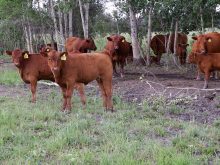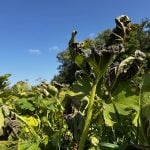RED DEER – Rules for exporting horse meat to Europe are demanding more traceability and additional food safety measures.
By July, Canada must provide horse identification and health documents that include treatment records for the last six months of animals’ lives, said Les Burwash of the Alberta Agriculture horse industry branch.
“If we are going to want to sell, these are the rules of the game,” he said at the horse breeders and owners conference held in Red Deer Jan. 15-17.
Read Also

Trade war may create Canadian economic opportunities
Canada’s current tariff woes could open chances for long-term economic growth and a stronger Canadian economy, consultant says — It’s happened before.
Owners must keep track of all treatments starting Jan. 31, and horses used for human food must not receive anabolic steroids. If the seller did not own the horse for 180 days before slaughter, documents must be obtained from the previous owner.
Within three years, Canada must have electronic identification and provide traceability on all horses entering plants.
Complete information along with an equine identification form is available from the Canadian Food Inspection Agency and may be found at www.inspection.gc.ca.
Burwash said the United States Department of Agriculture is co-operating with CFIA to ensure all horses entering Canada meet these standards.
The rules changed when the European Union food and veterinary office conducted two audits of the Canadian system, as well as other nations supplying horse meat, and found few animal records were available.
As well, there was no system to segregate horses for food from those in the general population.
Rick Frederickson, head of Alberta’s traceability program, said livestock owners must register farm locations through premises identification and build traceback systems. The first are coming from beef and pork producers. Horse owners will need to comply or risk losing the processing industry.
“What happens to Alberta if we don’t have a horse slaughter facility? We all know what boat the U.S. is in,” said Frederickson.
The U.S. banned horse slaughter in 2007 and now thousands are exported to Canada or Mexico for processing. Canada has about one million horses and more than 200,000 owners.
The last figures from 2008 had 111,000 processed with most handled at a facility in Fort Macleod.
Canada consumes about 10 percent of the available horse meat while the majority is shipped to the EU. About 30 percent of the horse meat eaten in Europe comes from Canada.















